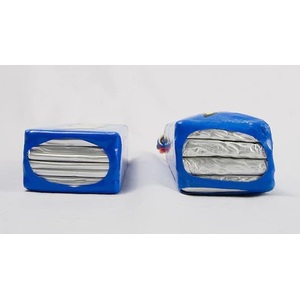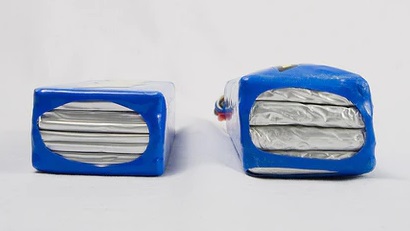Categories
- Quadcopter
- Aquaculture
- Raspberry Pi
- Video
- Components
- Gadgets
- Auto & Outdoors
- Home Automation & Security
- Audio
- Mobile Accessories
- IT
- Hobby
- Tools, Test & Mesurement
- Drones
- Drone Battery
- Spare Parts
- Remote Control Drone
- Fishing Release
- Racing Drones
- Autel EVO 2
- FPV Drone
- Mini Drone
- Drone with Camera
- Drones with FPV Display
- Beginner Drones
- GPS Drone
- Wifi FPV Drones
- Waterproof Fishing Drone
-
DJI Drones
- DJI Drone Accessories
- DJI Air 2S
- DJI Drone Spare Parts
- DJI Enterprise
- DJI FPV Racing Drone
- DJI Inspire Drone
- DJI Mavic Air
- DJI Mavic Drone
- DJI Mavic Mini
- DJI Mavic Mini 2
- DJI Spark Drone
- iFlight Racing Drones
- Mavic 2
- Mavic air 2
- Mavic Air 2 fly More combo
- Mavic Air 2 RTF
- Mavic Pro Platinum
- Phantom 3 Drone
- Phantom 4 Advance
- Phantom 4 Drone
- Phantom 4 Pro
- LED Light
- LED Lantern
- LED String / Fairy Lights
- LED Work Light
- LED Party Lights
- LED Torch
- LED Head Torch
- Household LED Light
- 12V LED Lights
-
LED Strip Lights
- Green LED Strip Light
- Power Supply
- Red Led Strip Light
- USB LED Strip Light
- Yellow LED Strip Light
- Accessory
- Blue LED Strip Light
- Neon LED Strip Light
- Rigid LED Strip Lights
- White Led Strip Light
- RGBW LED Strip Lights
- Digital LED Light Strip
- 2835 LED Strip Light Kits
- RGB LED Strip Light
- 5050 LED Light Strip Kit
- Toys
- HDMI
- HDCP Converter
- IQ4 Compatible HDMI Products
- HDMI Wall Plate Socket
- HDMI Audio Extractor
- HDMI Matrix Switcher
- HDMI Wireless Transmitter and Receiver
- HDMI Extender
- HDMI Converter
- HDMI Splitter
- HDMI Switch
- HDMI Adapter
-
HDMI Cable
- Mini Display Port
- Display Port
- Amplified HDMI Cable
- DVI Cable
- HDMI to VGA Cable
- HDMI to Micro HDMI Cable
- HDMI to DVI Cable
- HDMI to Mini HDMI
- Premium High Speed HDMI Cable with Ethernet
- High Speed HDMI Cable with Ethernet
- Hybrid Fibre Optic HDMI 2.0 Cable
- HDMI 2.0 Cable
- 8K HDMI Cable
- 4K HDMI Cable
- Hybrid Fibre Optic HDMI 2.1 Cable
- Media Player & Set Top Box
- Arduino Projects
- Power
- Battery Tester
- Transformer
- DC Power Cable & Connectors
- Solar
- Switchmode Power Supply
- AC Power Cables, Plugs and Sockets
- Powerboard and Adaptors
- Travel Adapter
- Battery Chargers
- Batteries
- USB Charger
-
GPO & Light Switch
- Electrical Accessories
- Circuit breaker
- Distribution Box
- Plug Base Socket
- Weatherproof Socket
- Black Light Switches
- Clipsal Style White
- Smart Zigbee Power Switch
- Black Power Points
- Smart Zigbee Power Socket
- Slim Series
- Alpha Series
- GPO Wall Sockets
- Power & Light Switch
- Glass Series
- Smart Wifi Power Socket
- Smart Wifi Light Switch
-
Power Adapter
- Extension Cables, Splitters and Plugs
- Reversible DC Plug
- Linear Type
- UPS
- Multi-voltage Power Adapter
- 14V DC Power Adapter
- 13.8V DC Power Adapter
- 3.3V Power Adapter
- 19V DC Power Adapter
- 7.5V DC Power Adapter
- Variable Power Supply
- USB Power Adapter
- 18V DC Power Adapter
- 48V Power Supply
- AC Power Adapter
- 24V DC Power Adapter
- 15V DC Power Adapter
- 9V DC Power Adapter
- 6V DC Power Adapter
- 5V DC Power Adapter
- 12V DC Power Adapter
Information
Keeping Your LiPo Batteries Healthy: Tips to Avoid Swelling
Author: Aus Electronics Direct Date Posted:1 June 2023

Keeping Your LiPo Batteries Healthy: Tips to Avoid Swelling

Introduction:
Lithium Polymer (LiPo) batteries are popular power sources for various electronic devices, from remote-controlled vehicles to drones and portable gadgets. Their high energy density and lightweight design make them ideal for these applications. However, one common issue that plagues LiPo batteries is swelling, which can significantly reduce their performance and lifespan. In this blog post, we'll explore what causes LiPo batteries to swell and provide practical tips on how to prevent it.
Understanding LiPo Battery Swelling:
LiPo battery swelling, also known as puffing, occurs when the internal components of the battery expand due to various factors. The primary cause of swelling is the formation of gas (typically hydrogen) inside the battery cells during charging and discharging cycles. This gas buildup can result from several factors, including overcharging, over-discharging, high temperatures, physical damage, or manufacturing defects.
Tips to Avoid LiPo Battery Swelling:
1. Proper Charging:
- Use a quality LiPo battery charger specifically designed for your battery's chemistry and voltage.
- Always charge your LiPo batteries at the recommended voltage and current settings specified by the manufacturer.
- Avoid overcharging or undercharging your batteries, as this can lead to gas buildup and eventual swelling. Use a smart charger with built-in safety features like voltage cutoff and balance charging to prevent overcharging.
2. Monitoring Battery Temperature:
- LiPo batteries are sensitive to temperature extremes. Avoid charging or discharging them in hot environments, as high temperatures can accelerate gas formation and swelling.
- Use a temperature sensor or thermal gun to monitor the temperature of your batteries during operation. If they become too hot, stop using them immediately and allow them to cool down before further use.
3. Proper Storage:
- Store your LiPo batteries in a cool, dry place away from direct sunlight and heat sources. Avoid leaving them in a vehicle or exposed to extreme temperatures, as this can accelerate degradation and swelling.
- When storing LiPo batteries for an extended period, ensure they are at a partial charge (around 50%). Storing them fully charged or fully depleted can increase the risk of swelling and reduce their overall lifespan.
4. Avoid Physical Damage:
- Handle your LiPo batteries with care and avoid dropping or puncturing them, as physical damage can compromise their integrity and lead to gas leakage and swelling.
- Inspect your batteries regularly for signs of damage, including bulging or punctured cells. If you notice any abnormalities, discontinue use and safely dispose of the battery following proper recycling procedures.
5. Proper Discharging:
- Avoid discharging your LiPo batteries below their recommended minimum voltage, as deep discharges can cause irreversible damage and lead to swelling.
- Use a low-voltage alarm or voltage checker to monitor the voltage of your batteries during use, and stop using them if they reach the minimum voltage threshold recommended by the manufacturer.
Conclusion:
Preventing LiPo battery swelling requires careful attention to charging practices, temperature management, storage conditions, and handling. By following the tips outlined in this blog post, you can extend the lifespan of your LiPo batteries and minimize the risk of swelling, ensuring optimal performance and safety for your electronic devices. Remember, prioritizing battery health not only saves you money in the long run but also reduces the risk of accidents and potential damage to your equipment.

